Mouxing Yang
LLaVA-ReID: Selective Multi-image Questioner for Interactive Person Re-Identification
Apr 15, 2025Abstract:Traditional text-based person ReID assumes that person descriptions from witnesses are complete and provided at once. However, in real-world scenarios, such descriptions are often partial or vague. To address this limitation, we introduce a new task called interactive person re-identification (Inter-ReID). Inter-ReID is a dialogue-based retrieval task that iteratively refines initial descriptions through ongoing interactions with the witnesses. To facilitate the study of this new task, we construct a dialogue dataset that incorporates multiple types of questions by decomposing fine-grained attributes of individuals. We further propose LLaVA-ReID, a question model that generates targeted questions based on visual and textual contexts to elicit additional details about the target person. Leveraging a looking-forward strategy, we prioritize the most informative questions as supervision during training. Experimental results on both Inter-ReID and text-based ReID benchmarks demonstrate that LLaVA-ReID significantly outperforms baselines.
Learning Locally, Revising Globally: Global Reviser for Federated Learning with Noisy Labels
Nov 30, 2024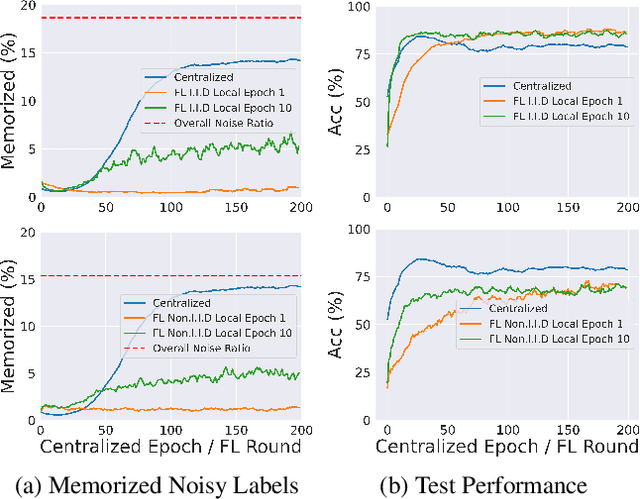
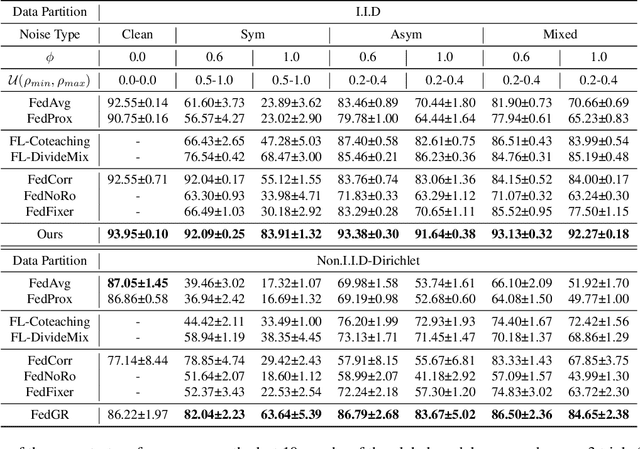
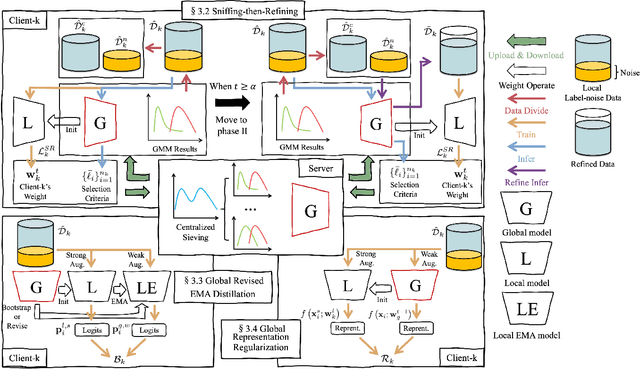
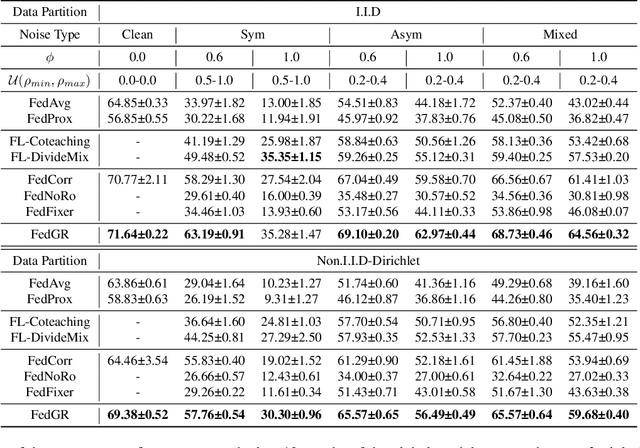
Abstract:The success of most federated learning (FL) methods heavily depends on label quality, which is often inaccessible in real-world scenarios, such as medicine, leading to the federated label-noise (F-LN) problem. In this study, we observe that the global model of FL memorizes the noisy labels slowly. Based on the observations, we propose a novel approach dubbed Global Reviser for Federated Learning with Noisy Labels (FedGR) to enhance the label-noise robustness of FL. In brief, FedGR employs three novel modules to achieve noisy label sniffing and refining, local knowledge revising, and local model regularization. Specifically, the global model is adopted to infer local data proxies for global sample selection and refine incorrect labels. To maximize the utilization of local knowledge, we leverage the global model to revise the local exponential moving average (EMA) model of each client and distill it into the clients' models. Additionally, we introduce a global-to-local representation regularization to mitigate the overfitting of noisy labels. Extensive experiments on three F-LNL benchmarks against seven baseline methods demonstrate the effectiveness of the proposed FedGR.
Test-time Adaptation for Cross-modal Retrieval with Query Shift
Oct 21, 2024



Abstract:The success of most existing cross-modal retrieval methods heavily relies on the assumption that the given queries follow the same distribution of the source domain. However, such an assumption is easily violated in real-world scenarios due to the complexity and diversity of queries, thus leading to the query shift problem. Specifically, query shift refers to the online query stream originating from the domain that follows a different distribution with the source one. In this paper, we observe that query shift would not only diminish the uniformity (namely, within-modality scatter) of the query modality but also amplify the gap between query and gallery modalities. Based on the observations, we propose a novel method dubbed Test-time adaptation for Cross-modal Retrieval (TCR). In brief, TCR employs a novel module to refine the query predictions (namely, retrieval results of the query) and a joint objective to prevent query shift from disturbing the common space, thus achieving online adaptation for the cross-modal retrieval models with query shift. Expensive experiments demonstrate the effectiveness of the proposed TCR against query shift. The code will be released upon acceptance.
An Empirical Study of Parameter Efficient Fine-tuning on Vision-Language Pre-train Model
Mar 13, 2024Abstract:Recent studies applied Parameter Efficient Fine-Tuning techniques (PEFTs) to efficiently narrow the performance gap between pre-training and downstream. There are two important factors for various PEFTs, namely, the accessible data size and fine-tunable parameter size. A natural expectation for PEFTs is that the performance of various PEFTs is positively related to the data size and fine-tunable parameter size. However, according to the evaluation of five PEFTs on two downstream vision-language (VL) tasks, we find that such an intuition holds only if the downstream data and task are not consistent with pre-training. For downstream fine-tuning consistent with pre-training, data size no longer affects the performance, while the influence of fine-tunable parameter size is not monotonous. We believe such an observation could guide the choice of training strategy for various PEFTs.
Decoupled Contrastive Multi-view Clustering with High-order Random Walks
Aug 22, 2023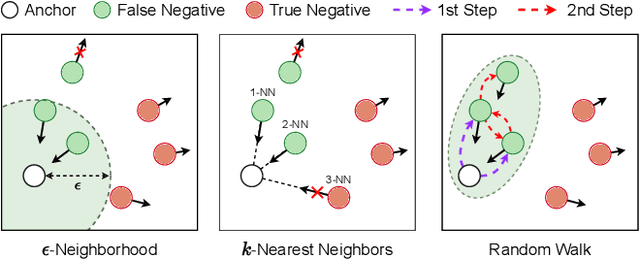
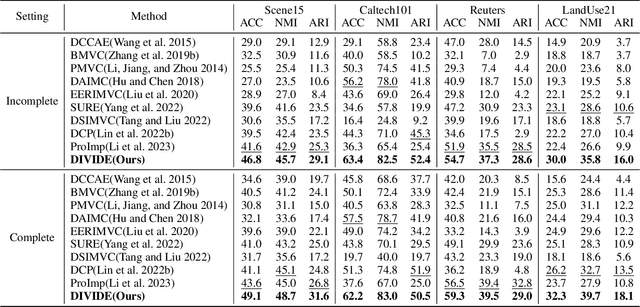
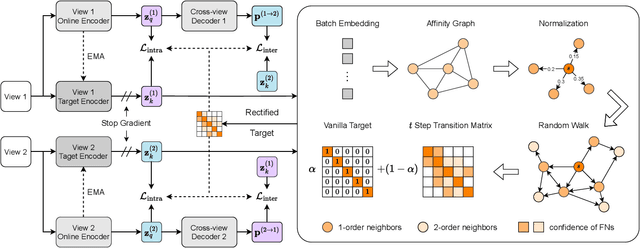
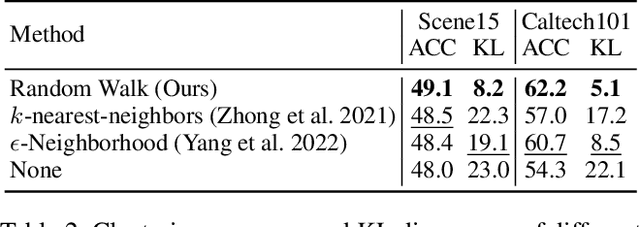
Abstract:In recent, some robust contrastive multi-view clustering (MvC) methods have been proposed, which construct data pairs from neighborhoods to alleviate the false negative issue, i.e., some intra-cluster samples are wrongly treated as negative pairs. Although promising performance has been achieved by these methods, the false negative issue is still far from addressed and the false positive issue emerges because all in- and out-of-neighborhood samples are simply treated as positive and negative, respectively. To address the issues, we propose a novel robust method, dubbed decoupled contrastive multi-view clustering with high-order random walks (DIVIDE). In brief, DIVIDE leverages random walks to progressively identify data pairs in a global instead of local manner. As a result, DIVIDE could identify in-neighborhood negatives and out-of-neighborhood positives. Moreover, DIVIDE embraces a novel MvC architecture to perform inter- and intra-view contrastive learning in different embedding spaces, thus boosting clustering performance and embracing the robustness against missing views. To verify the efficacy of DIVIDE, we carry out extensive experiments on four benchmark datasets comparing with nine state-of-the-art MvC methods in both complete and incomplete MvC settings.
Semantic Invariant Multi-view Clustering with Fully Incomplete Information
May 22, 2023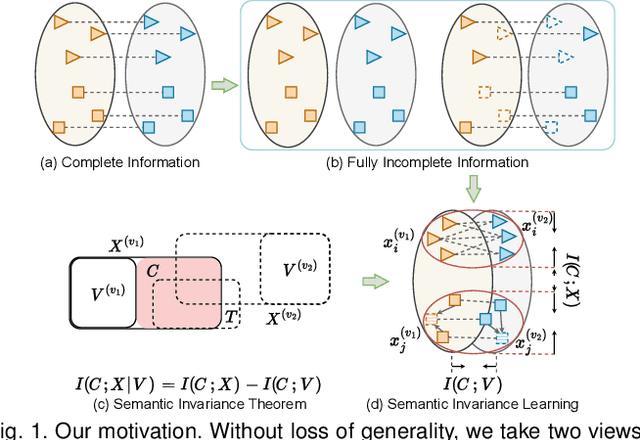
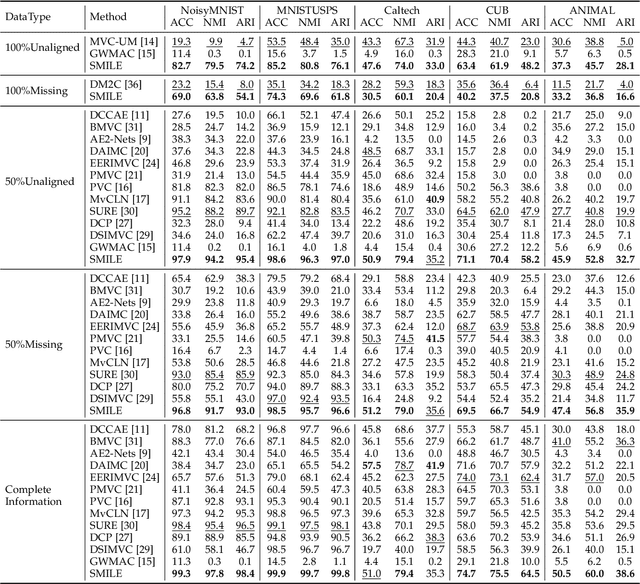

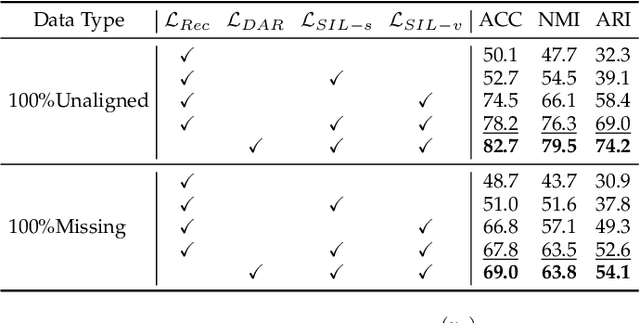
Abstract:Robust multi-view learning with incomplete information has received significant attention due to issues such as incomplete correspondences and incomplete instances that commonly affect real-world multi-view applications. Existing approaches heavily rely on paired samples to realign or impute defective ones, but such preconditions cannot always be satisfied in practice due to the complexity of data collection and transmission. To address this problem, we present a novel framework called SeMantic Invariance LEarning (SMILE) for multi-view clustering with incomplete information that does not require any paired samples. To be specific, we discover the existence of invariant semantic distribution across different views, which enables SMILE to alleviate the cross-view discrepancy to learn consensus semantics without requiring any paired samples. The resulting consensus semantics remains unaffected by cross-view distribution shifts, making them useful for realigning/imputing defective instances and forming clusters. We demonstrate the effectiveness of SMILE through extensive comparison experiments with 13 state-of-the-art baselines on five benchmarks. Our approach improves the clustering accuracy of NoisyMNIST from 19.3\%/23.2\% to 82.7\%/69.0\% when the correspondences/instances are fully incomplete. We will release the code after acceptance.
Incomplete Multi-view Clustering via Prototype-based Imputation
Jan 30, 2023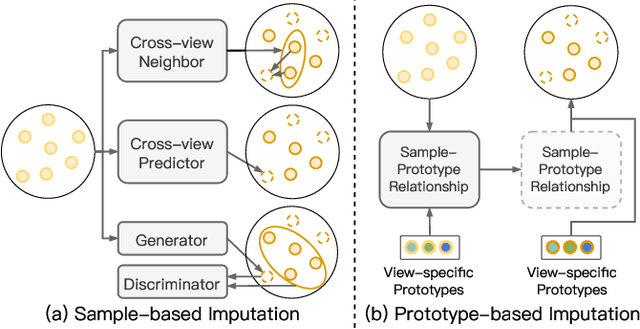
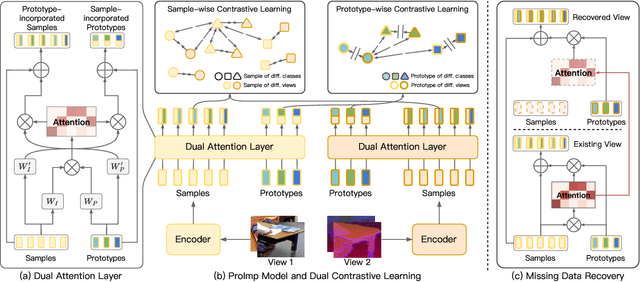
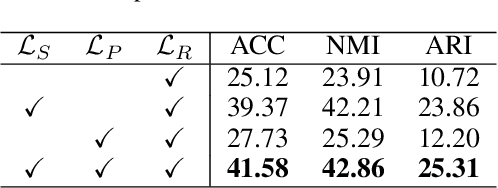
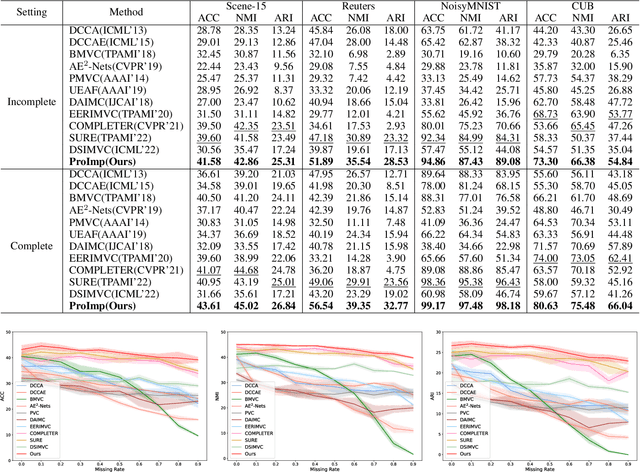
Abstract:In this paper, we study how to achieve two characteristics highly-expected by incomplete multi-view clustering (IMvC). Namely, i) instance commonality refers to that within-cluster instances should share a common pattern, and ii) view versatility refers to that cross-view samples should own view-specific patterns. To this end, we design a novel dual-stream model which employs a dual attention layer and a dual contrastive learning loss to learn view-specific prototypes and model the sample-prototype relationship. When the view is missed, our model performs data recovery using the prototypes in the missing view and the sample-prototype relationship inherited from the observed view. Thanks to our dual-stream model, both cluster- and view-specific information could be captured, and thus the instance commonality and view versatility could be preserved to facilitate IMvC. Extensive experiments demonstrate the superiority of our method on six challenging benchmarks compared with 11 approaches. The code will be released.
Graph Matching with Bi-level Noisy Correspondence
Dec 22, 2022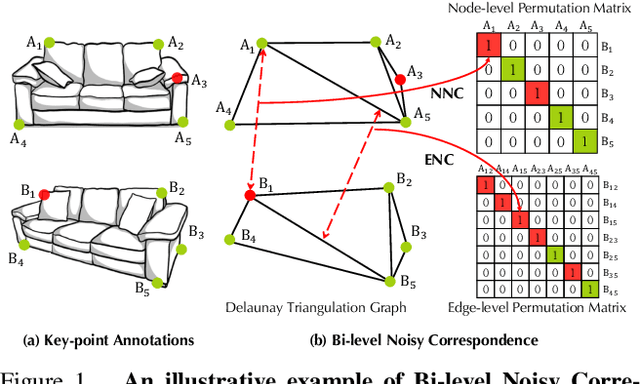
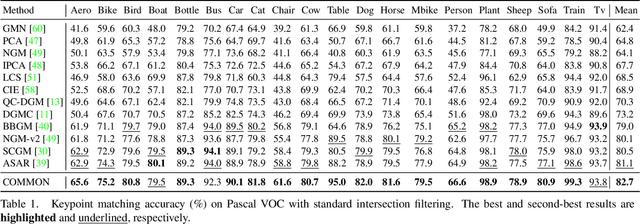
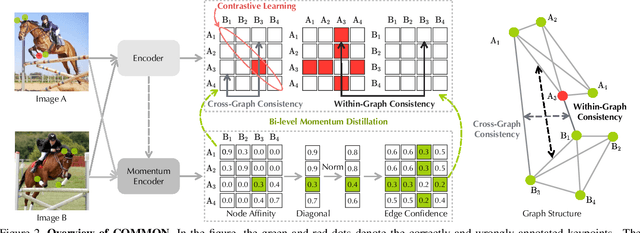

Abstract:In this paper, we study a novel and widely existing problem in graph matching (GM), namely, Bi-level Noisy Correspondence (BNC), which refers to node-level noisy correspondence (NNC) and edge-level noisy correspondence (ENC). In brief, on the one hand, due to the poor recognizability and viewpoint differences between images, it is inevitable to inaccurately annotate some keypoints with offset and confusion, leading to the mismatch between two associated nodes, i.e., NNC. On the other hand, the noisy node-to-node correspondence will further contaminate the edge-to-edge correspondence, thus leading to ENC. For the BNC challenge, we propose a novel method termed Contrastive Matching with Momentum Distillation. Specifically, the proposed method is with a robust quadratic contrastive loss which enjoys the following merits: i) better exploring the node-to-node and edge-to-edge correlations through a GM customized quadratic contrastive learning paradigm; ii) adaptively penalizing the noisy assignments based on the confidence estimated by the momentum teacher. Extensive experiments on three real-world datasets show the robustness of our model compared with 12 competitive baselines.
 Add to Chrome
Add to Chrome Add to Firefox
Add to Firefox Add to Edge
Add to Edge